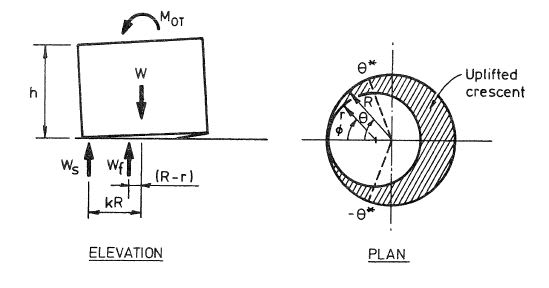Hi All
In the Table 5.21, for uplift load cases, it is written for W1 and W2 definition: -
W1 = is the corroded weight of the roof plates plus the corroded weight of the shell and any other corroded permanent attachments acting on the shell
W2 = is the corroded weight of the shell and any corroded permanent attachments acting on the shell including the portion of the roof plates and framing acting on the shell
Is there a difference?
W1, W2 includes roof plates corroded
W1, W2 includes shell plates corroded
W1, W2 includes permanent shell attachments
W2 includes roof framing whereas W1 does not. This is the only difference I notice.
W1 is used for pressure load cases
W2 is used for wind load cases
In my view, all dead load (from roof, shell, attachments and framing) counteracts wind.
Maybe I miss some of the finer points here that can be pointed out.
Michael
In the Table 5.21, for uplift load cases, it is written for W1 and W2 definition: -
W1 = is the corroded weight of the roof plates plus the corroded weight of the shell and any other corroded permanent attachments acting on the shell
W2 = is the corroded weight of the shell and any corroded permanent attachments acting on the shell including the portion of the roof plates and framing acting on the shell
Is there a difference?
W1, W2 includes roof plates corroded
W1, W2 includes shell plates corroded
W1, W2 includes permanent shell attachments
W2 includes roof framing whereas W1 does not. This is the only difference I notice.
W1 is used for pressure load cases
W2 is used for wind load cases
In my view, all dead load (from roof, shell, attachments and framing) counteracts wind.
Maybe I miss some of the finer points here that can be pointed out.
Michael

